Technology Stacks: Cosmos-Specific REMAP Architecture
Table of contents
- 1. Conceptual Architecture of REMAP
- 2. Technical Architecture Concept
- 3. REMAP Ecosystem Governance
- 4. Tokenomics
- 5. REMAP Token-Economic Design
- 6. REMAP Coin (RMC)
- 7. Starting the Ecosystem
- 8. Technology Stacks: Identity and Access Control in REMAP
- 9. Technology Stacks: Applications of REMAP - Modules and Interactions
- 10. Technology Stacks: Cosmos-Specific REMAP Architecture
Technology Stacks: Cosmos-Specific REMAP Architecture
The Cosmos blockchain ecosystem is considered the Internet of blockchains that provides SDKs for developing application-specific blockchains. Cosmos provides by its hub and zone concept connectivity for sharing and exchanging information between different blockchain networks. Therefore, it uses zones and hubs and it defines the Inter-Blockchain Communication (IBC) Protocol, which is a unique innovative way to transfer value. A Cosmos zone is an application-specific blockchain also described as an appchain. Therefore, a zone always represents one blockchain, or appchain, itself. A hub is a blockchain itself that serves as an economic, security, and exchange hub to interconnect different blockchains that reside in zones. As the hub is a blockchain itself, it uses also its own consensus algorithm.
Core Features of Cosmos
The REMAP project intends to reuse some of the already existing Cosmos SDK modules but extends the Cosmos SDK module set with specific REMAP modules for PropTech applications. Also, the Inter-Blockchain Communication Protocol will be reused in the REMAP project. This ensures interoperability between the data and business logic, which leads to faster processes and saves money at the same time.
Hub/Zone architecture (Framework for Scalability): The hubs and zones communicate with each other via the Inter-Blockchain Communication Protocol and a relayer that runs the protocol. In the zone, a blockchain is isolated and connected to a hub. This isolation is necessary so that the zones do not affect each other in a destructive way. Some hubs may be restricted to only communicate with private hubs or only public hubs or both. A zone can decide to which hub it is connected and to which other zone a token is allowed to be sent. The bridge APIs outlined in the REMAP technology-agnostic architecture are implemented in accordance with the IBC Protocol.
Cosmos SDK: The ecosystem also defines modules described as the Cosmos SDK. These modules implement design patterns and are important for developers to interact with the highly effective Tendermint consensus via the Application Blockchain Communication Interface. Such an important module is for example the Auth module, which is responsible for authentication of an account before it signs a transaction. The module also implements the Application Blockchain Communication Interface (ABCI) and is therefore compatible with the Tendermint consensus. Developers can extend these modules or implement new ones in their application-specific blockchain. The smart contract modules outlined in the REMAP technology-agnostic architecture will be mainly written in RUST. In addition, CosmWasm provides a platform for writing Cosmos-specific smart contracts can also be used.
Cosmos Consensus (Tendermint): Consensus is proven to be faster than the classic proof-ofwork consensus from Bitcoin and similar blockchains. It is Byzantine fault tolerant and also comes up with a faster finality of a transaction. Some results show that the Tendermint Consensus can achieve up to 10,000 transactions per second (TPS). More importantly, the Tendermint consensus is already used in various other successful Cosmos blockchain related projects such as Binance.
Selection of Cosmos Network
The PropTech market lacks interoperability of data and business logic, which prevents PropTech companies from expanding and fully exploiting the potential of digitization of processes within the real estate business ecosystem. For example, the same procedure of scanning a document is implemented in every prop-tech company differently but solves, at the end of the day, the same issue. The same data is stored in different isolated databases and is not shared or reused. Blockchain technology solves this problem by giving different stakeholders the chance to reuse business logic and data. The offer of the Cosmos ecosystem to design application-specific blockchains is perfect for the ultimate goal of REMAP to build a blockchain-based module/layer development kit for PropTech. Another reason to use Cosmos is that the ecosystem provides the flexibility for defining and realizing REMAP’s own native Coin (RMC).
The Cosmos SDK allows the sharing of business logic across different areas such as smart building or P2P renting, for example, and the blockchain technology guarantees immutability, security, and consensus of data so that every stakeholder can use the worthful data of emerging markets and save costs by sharing its data. This increases the efficiency of every PropTech company contributing to the REMAP ecosystem. Moreover, the PropTech companies receive trust in the value of their data and their capital, because every stakeholder uses the same data. REMAP aims to address a lot of stakeholders at once and needs therefore a system that scales well by design. This is achieved by the implementation of the byzantine fault tolerance system, the Inter-Blockchain Communication Protocol and the highly effective Tendermint consensus protocol. Therefore, the Cosmos ecosystem is the proper technology for the goal of REMAP to build a blockchain-based module/layer development kit.


